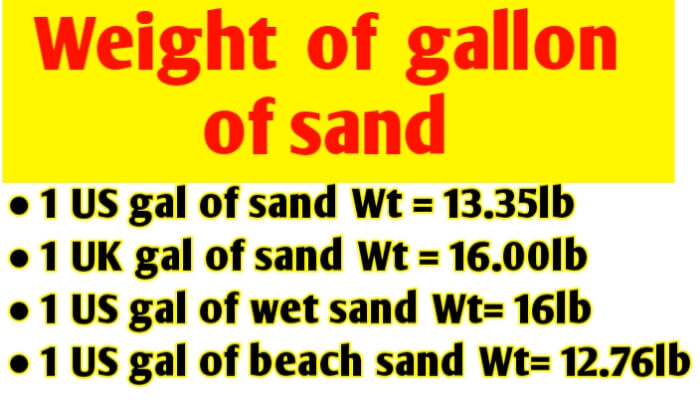Sand Weight per Gallon: Understanding and Utilizing This Essential Measurement
Sand weight per gallon is a crucial metric used in various industries, such as construction, engineering, and manufacturing. This measurement plays a significant role in determining the weight and volume of sand required for specific applications. Understanding the concept of sand weight per gallon and its significance can help professionals make informed decisions regarding sand usage. This article will delve into the fundamentals of sand weight per gallon, its calculation methods, and its applications in different fields. By the end, readers will have a comprehensive understanding of this vital measurement and how it influences their work.

Sand weight per gallon
1. What is Sand Weight per Gallon?
Sand weight per gallon refers to the weight of a specific volume of sand, usually measured in pounds, in relation to a gallon of liquid. It serves as a benchmark for estimating the density and overall weight of sand in various scenarios. The measurement is particularly useful when determining the amount of sand needed for a specific project, as it provides a standardized unit for comparison.
2. Calculating Sand Weight per Gallon
To calculate sand weight per gallon, you need to know the density of the sand and convert it to pounds per gallon. The formula for this calculation is as follows:
Sand weight per gallon = (Sand density in pounds per cubic foot) / 7.48
Typically, the density of sand varies depending on factors such as composition, moisture content, and compaction. Different types of sand, such as fine sand, coarse sand, or specialty sands, may have different densities. It is crucial to refer to reliable sources or conduct tests to obtain accurate density values.

Weight of gallon of sand
3. Applications of Sand Weight per Gallon
a. Construction Industry:
- Estimating the amount of sand required for concrete mixtures.
- Determining the weight of sand used for backfilling trenches or foundations.
- Calculating the quantity of sand for bricklaying or masonry work.
b. Engineering and Geotechnical Studies:
- Analyzing soil composition and stability by measuring sand density.
- Designing foundations and determining bearing capacities based on sand weight per gallon.
c. Manufacturing and Industrial Processes:
- Precise sand dosing for casting molds in foundries.
- Quality control during glass manufacturing by ensuring the correct sand-to-glass ratio.
Understanding sand weight per gallon is essential for professionals in various industries. This measurement enables accurate estimation of sand quantities, ensuring cost-effective operations and preventing unnecessary material wastage. By calculating the sand weight per gallon, professionals can make informed decisions about the amount of sand needed for specific applications, improving project planning and resource allocation. Whether it's construction, engineering, or manufacturing, knowing the sand weight per gallon helps professionals optimize their processes and achieve desired results. Stay tuned for further exploration of sand-related topics, as we continue to unravel the complexities and importance of sand in different sectors.